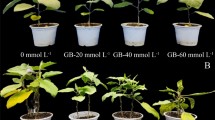Summary
The incorporation of C14-amino acids (aspartic acid, glutamic acid, threonine and proline) and C14-nucleic acid bases (adenine, guanine, cytosine and uracil) into the seedling, reproductive stage and young ear portion of rice plant was investigated.
It was found that C14-aspartic acid was incorporated into the rice seedling more rapidly than C14-threonine or C14-proline; on the other hand C14-proline was found to be more rapidly incorporated than C14-aspartic acid into reproductive stage plant and young ear portion.
Similarly C14-adenine was incorporated into the rice seedling more rapidly than other C14-labelled bases. On the other hand C14-uracil was preferentially incorporated to C14-adenine or C14-guanine into the reproductive stage plant and young ear portion.
It is suggested from the results obtained that proline is polymerized into polypeptide or protein in the rice plant more rapidly at the reproductive stage than at the seedling stage and that a higher proportion of pyrimidine bases might be involved into the metabolic process at the reproductive stage of rice plant.
Similar content being viewed by others
References
Graham, J. S. D., Morton, R. K. and Raison, J. K., The in vivo uptake and incorporation of radioisotopes into proteins of wheat endosperm. Australian J. Biol. Sci.17, 102–114 (1964).
Kasugai, S., The studies on water culture methods. J. Sci. Soil and Manure, Japan13, 669–705 (1939).
Matsushita, A., The variation of the free amino acid contents in rice plant during the ripening period. J. Japanese Food Nutr.16, 220–223 (1963).
Matsushita, A., The variation of the free amino acid contents in eggplant and lichis in their growing period. J. Japanese Food Nutr.16, 224–228 (1963).
Mathur, S. N. and Sharma, R. A., Effect of uracil and 5-nitrouracil on growth and flowering of tomato. Physiol. Plantarum21, 911–917 (1968).
Miller, R. H. and Schmidt, E. L., Uptake and assimilation of amino acids supplied to the sterile soil: root environement of the bean plant (Phaseolus vulgaris). Soil Sci.100, 323–330 (1965).
Okuda, A., Yamaguchi, M. and Shinn, Y., Direct absorption of organic substances into plant roots under bacterial free condition. J. Sci. Soil Manure Japan35, 311–316 (1964).
Ozaki, K. and Tai, K., The studies on nitrogen metabolism of paddy rice at heading (1) Free proline in the pollens. Soil Plant Food6, 184–187 (1961).
Virtanen, A. I. and Linkola, H., Organic compounds as nitrogen nutrition for higher plants. Nature158 515 (1946).
Author information
Authors and Affiliations
Rights and permissions
About this article
Cite this article
Haque, M.Z., Kobayashi, M., Fujii, K. et al. The incorporation of amino acids and nucleic acid bases into the seedling, reproductive stage and young ear portion of rice plants. Plant Soil 34, 17–24 (1971). https://doi.org/10.1007/BF01372756
Received:
Issue Date:
DOI: https://doi.org/10.1007/BF01372756




